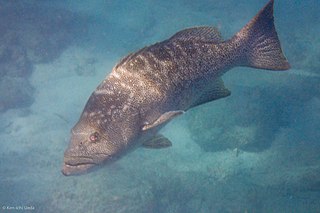
Metronidazole, sold under the brand name Flagyl among others, is an antibiotic and antiprotozoal medication. It is used either alone or with other antibiotics to treat pelvic inflammatory disease, endocarditis, and bacterial vaginosis. It is effective for dracunculiasis, giardiasis, trichomoniasis, and amebiasis. It is an option for a first episode of mild-to-moderate Clostridium difficile colitis if vancomycin or fidaxomicin is unavailable. Metronidazole is available orally, as a cream or gel, and by slow intravenous infusion.

Rosacea is a long-term skin condition that typically affects the face. It results in redness, pimples, swelling, and small and superficial dilated blood vessels. Often, the nose, cheeks, forehead, and chin are most involved. A red, enlarged nose may occur in severe disease, a condition known as rhinophyma.
Ocular rosacea is a type of rosacea that affects the eyes. Signs and symptoms generally consist of redness, irritation or burning of the eyes. Affected individuals may also feel that there is something, such as an eyelash, in the eye and frequently have redness of the nose and cheeks as well. Complications include corneal ulcer.

Perioral dermatitis, also known as periorificial dermatitis, is a common type of skin rash. Symptoms include multiple small (1–2 mm) bumps and blisters sometimes with background redness and scale, localized to the skin around the mouth and nostrils. Less commonly the eyes and genitalia may be involved. It can be persistent or recurring and resembles particularly rosacea and to some extent acne and allergic dermatitis. The term "dermatitis" is a misnomer because this is not an eczematous process.

Brimonidine is an α2 agonist medication used to treat open-angle glaucoma, ocular hypertension, and rosacea. In rosacea it improves the redness. It is used as eye drops or applied to the skin.

Rhinophyma is a condition causing development of a large, bulbous nose associated with granulomatous infiltration, commonly due to untreated rosacea. The condition is most common in older white males.

The pink-headed imperial pigeon is a species of bird in the family Columbidae found in the Lesser Sunda Islands of Indonesia. Its natural habitats are subtropical or tropical moist lowland forests, subtropical or tropical mangrove forests, and subtropical or tropical moist shrubland. It is threatened by habitat loss.

Steroid-induced rosacea is an iatrogenic condition from the use of either systemic steroid or topical steroids. It is nearly identical to steroid induced acne from the standpoint of etiology.

Mycteroperca rosacea, the leopard grouper or golden grouper, is a species of marine ray-finned fish, a grouper from the subfamily Epinephelinae which is part of the family Serranidae, which also includes the anthias and sea basses. It is found in the Eastern Central Pacific that occasionally makes its way into the aquarium trade.
Persistent edema of rosacea is a hard, nonpitting edema found on the areas involved, those mainly being the forehead, glabella, upper eyelids, nose, and/or cheeks.
Gram-negative rosacea is a cutaneous condition that clinically looks like stage II or III rosacea.
Gnathophyma involves swelling of the chin. It is a type of lesion associated with rosacea, a common chronic inflammatory skin disorder of the sebaceous glands characterized by redness, swelling, and acne-like pustules.
Metophyma is cushion-like swellings on the forehead above the saddle of the nose.
Otophyma is a cauliflower-like swelling of one or both ears.
Blepharophyma is chronic swelling of eyelids, mainly due to sebaceous gland hyperplasia.

A pimple or zit is a kind of comedo that results from excess sebum and dead skin cells getting trapped in the pores of the skin. In its aggravated state, it may evolve into a pustule or papule. Pimples can be treated by acne medications, antibiotics, and anti-inflammatories prescribed by a physician, or various over the counter remedies purchased at a pharmacy.

Tarucus rosacea, the Mediterranean Pierrot or Mediterranean tiger blue, is a butterfly in the family Lycaenidae. It is found in Mauritania, Senegal, the Gambia, Guinea, Burkina Faso, northern Ivory Coast, northern Ghana, northern Nigeria, Niger, northern Cameroon, Chad, Sudan, Ethiopia, northern Uganda, north-western Kenya, Somalia, Djibouti and Arabia. The habitat consists of Sudan savanna and the Sahel.

Pterolophia is a genus of longhorn beetles of the subfamily Lamiinae, containing the following species:

The National Rosacea Society (NRS) is a 501(c) nonprofit organization dedicated to improving the lives of the estimated 16 million Americans who suffer from rosacea, a chronic facial skin disorder. Its mission is to raise awareness, provide health information, and support medical research that may lead to improvement in the management, prevention, and potential cure for rosacea.

Saxifraga rosacea, or Irish saxifrage, is a herbaceous plant in the family Saxifragaceae.












